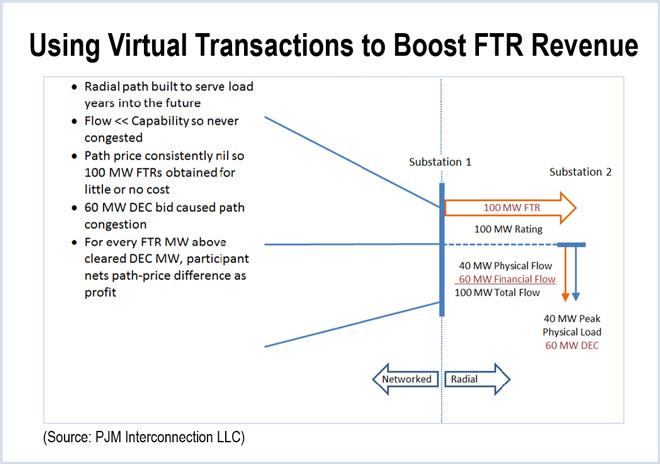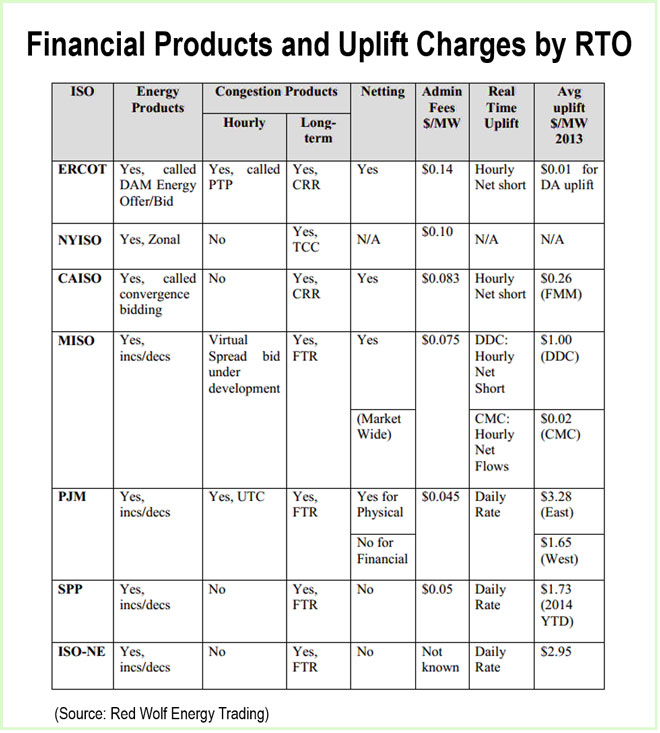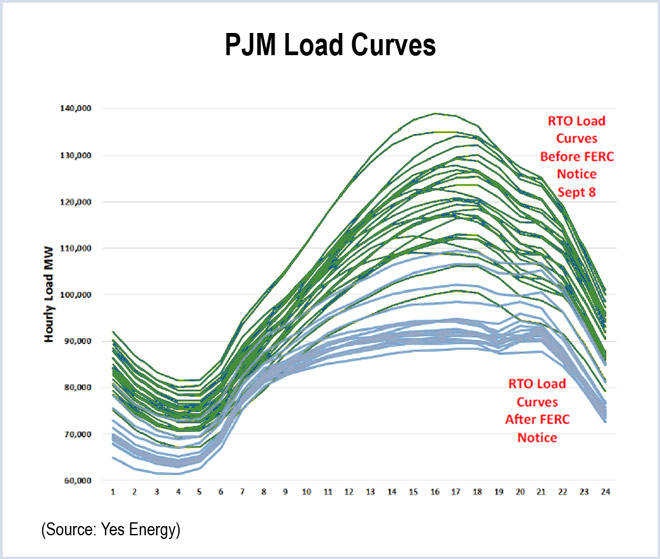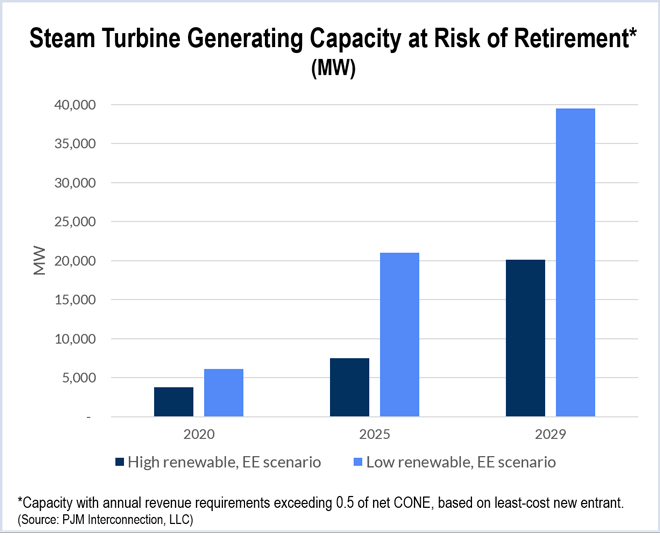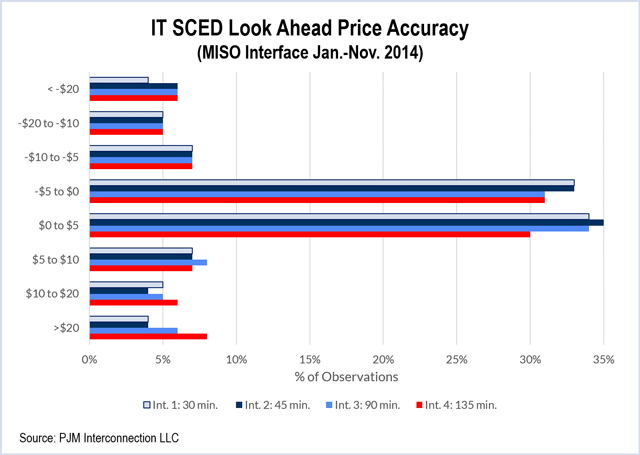Legislators May Be Waiting for Quinn to Leave Before Bill is Sent

Commonwealth Edison and Ameren stand to win an important victory in their attempts to get continued authorization to charge customers for smart grid improvements.
The state legislature easily passed a bill in December allowing the utilities to continue smart grid improvements. But legislative leaders are possibly waiting for Gov. Pat Quinn to leave office before they send the bill to be signed. Quinn, a Democrat who has made no secret of his thorny relationship with utility companies, vetoed a 2013 smart grid bill.“They’re waiting for me to leave,” Quinn told the Chicago Tribune. His Republican successor, Gov.-elect Bruce Rauner, is expected to be more receptive to the legislation. A new General Assembly gets sworn in on Wednesday, so Rauner has a two-day window to sign the measure.
More: Chicago Tribune (subscription required)
INDIANA
Pence Suggests Utilities Set Own Energy Efficiency Goals
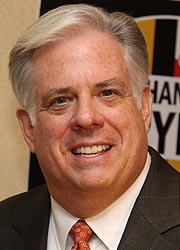
Gov. Mike Pence is proposing a policy that would allow electric utilities to determine their own energy efficiency goals, replacing mandated targets that the state Senate dismantled last year.
Pence’s proposal, which would require utilities to file energy efficiency plans every three years, would replace a 2009 law that set a 2% reduction in electricity use by 2019. That act was undone last year under a bill that became law without Pence’s signature.
More: Indiana Business Journal
IOWA
Walker Declares Emergency amid Propane Delivery Problems
Gov. Scott Walker declared a precautionary energy emergency last week after a key propane pipeline experienced supply interruptions.
The emergency proclamation provides extended operation hours to truckers to make up for delivery delays caused by the Mid-America East Blue Pipeline, which delivers propane to wholesale consumers in Iowa, Illinois and Wisconsin. Officials said the pipeline problem was expected to be quickly fixed.
More: WDIO
KANSAS
State to Argue Before SCOTUS on Gas Supplier Anti-Trust Case
Lawyers representing the state will appear before the U.S. Supreme Court this week to defend the right of states to intervene in antitrust matters involving natural gas companies.
The case, ONEOK v. Learjet, pits a natural gas supplier against large consumers. The consumers, led by Learjet, said that ONEOK, a wholesale gas provider based in Tulsa, Okla., charged artificially high fuel prices. ONEOK argued its prices are regulated by the Federal Energy Regulatory Commission, not state agencies. ONEOK’s appeals made it to the Supreme Court.
Although not parties to the original case, Kansas and 20 other states filed amicus briefs defending the rights of individual states to exercise their own consumer protection laws in the matter. “I’m encouraged that the Supreme Court granted us time for oral argument, and we will vigorously defend Kansas consumer-protection laws from the federal administration’s power-grab,” state Attorney General Derek Schmidt said.
More: Topeka Capital-Journal
LOUISIANA
PSC Member Angelle Raises More than $1.5 Million for Gubernatorial Bid
Scott Angelle, a member of the Public Service Commission who is running for governor this year, has already raised $1.5 million to fund his campaign.
Angelle will face fellow Republicans U.S. Sen. David Vitter and Lt. Gov. Jay Dardenne, and Democrat state Rep. John Bel Edwards, in the Oct. 24 primary. Under Louisiana’s system, all candidates appear on the same ballot, and voters may vote for any candidate, regardless of party affiliation. If no candidate receives a majority of the vote during the primary, a runoff election will be held on Nov. 21 between the top two primary candidates.
More: The Advocate
MARYLAND
State Department of Environment Opens Fracking Comment Period
The state Department of the Environment has opened a 30-day public comment period on proposed rules allowing hydraulic fracturing and natural gas development.
Gov. Martin O’Malley, in one of his final acts before leaving office, signed legislation allowing fracking in western Maryland. The rules contain a requirement other states have not included: permit applicants must produce a five-year comprehensive gas development plan. Gov.-elect Larry Hogan has promised to move swiftly to approve the rules after taking office Jan. 21.
More: Greenwich Time
Hogan Names Department Heads for Natural Resources, Environment

Incoming Gov. Larry Hogan appointed Charles Evans Jr. as the secretary of the Department of Natural Resources and Ben Grumbles as the Department of the Environment secretary.
Grumbles is a former assistant administrator at the federal Environmental Protection Agency under President George W. Bush and was involved in developing federal policy on hydraulic fracturing. Evans was assistant secretary of the state Department of Natural Resources under former Gov. Robert Ehrlich.
More: ThinkProgress
MINNESOTA
Sandpiper Pipeline Hearing Draws 500 Supporters and Opponents
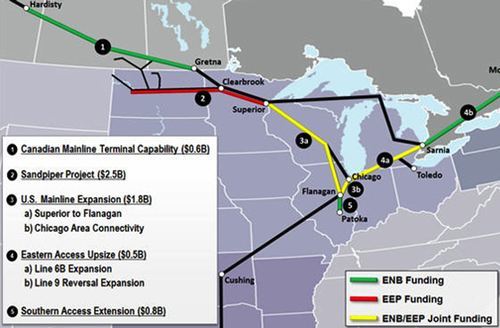
The PUC will determine whether the Enbridge Energy project goes forward. The 612-mile pipeline would connect the Bakken fields in North Dakota to an Enbridge hub in Clearbrook and a Great Lakes terminal in Superior, Wis.
One woman said she was opposed to the pipeline out of fear that a spill “could, in an instant, destroy the reasons we are here.” Others, such as a surveyor, said the pipeline could help boost the economy. The PUC is expected to issue a ruling in June.
More: Pioneer Press
MISSOURI
Two Utilities Seek Hikes in Fixed Rate Charges

KCP&L is asking for an increase from $9 to $25. Empire is seeking a boost from $12.52 to $18.75. KCP&L said it needs the increase to pay for transmission and distribution system improvements. Empire said the hike is needed to balance the company’s fixed and variable costs for electricity, which it said are “out of whack.”
More: Midwest Energy News
PSC Holds Hearings on Ameren’s Rate Increase
The Public Service Commission heard from Ameren Missouri customers who are upset that the utility has filed for its sixth rate increase since 2006.
The company is seeking an increase of $264 million, about 10%. The PSC staff has recommended it get only $113 million, or about a 4% increase. Since 2007, Ameren rates have risen more than 40%. The company filed the request in July. The PSC is expected to rule in May.
More: St. Louis Post-Dispatch
NEBRASKA
State Supreme Court Throws Out Keystone Pipeline Challenge
The state Supreme Court decision on Friday removed a major hurdle for TransCanada’s Keystone XL Pipeline.
The justices ruled 4-3 that a lower court correctly decided that a 2012 eminent domain law giving the governor the power to approve major oil pipeline projects was unconstitutional. But the state constitution requires five of the Supreme Court’s seven members to rule a law unconstitutional. The 4-3 Supreme Court ruling thus, under state law, voids the lower court’s ruling. “The legislation must stand by default,” the justices’ decision said.
It was an important win for the proposed $7 billion, 1,179-mile pipeline that is to run from Canada to the Gulf Coast. President Obama has vowed to veto Keystone legislation, but the White House has frequently hinged its opposition to the uncertainty of the Nebraska legal challenge. The court ruling came hours before the U.S. House of Representatives approved the pipeline in a crucial vote. The Senate vote is scheduled for Jan. 20.
More: Wall Street Journal
NEW JERSEY
Third-Party Provider Settles for $2.1 million in Bait-and-Switch
A third-party electricity provider accused of failing to live up to promises of guaranteed savings for customers has settled with state authorities for $2.1 million.
The Board of Public Utilities, the Division of Consumer Affairs and the state Attorney General’s Office alleged that HIKO Energy promised savings to customers to switch but charged them even more than the default utility rate when prices surged during last year’s frigid winter.
As part of the settlement, the energy supplier company will refund $1.82 million to customers. Similar complaints against two other third-party suppliers, Systrum Energy and Palmco Power, are pending.
More: The Record
Administrative Law Judge Says JCP&L Should Cut Rates by $107.5 Million
A state administrative law judge has recommended that Jersey Central Power & Light reduce its rates by $107.5 million. The state Division of Rate Counsel, which requested the review in 2011, called the recommended rate cut “unprecedented.”
The agency, which represents consumers in rate cases, had argued that the FirstEnergy utility had earned too much since its last rate case in 2005. It sought a decrease of more than $190 million. The staff of the Board of Public Utilities had urged for a $169.8 million cut.
JCP&L said it will dispute Judge Richard McGill’s findings. “Today’s decision does not reflect costs incurred by the company since 2011, [which include] JCP&L’s investment of more than $400 million to improve reliability across its service territory and the $580 million spent to rebuild the system following Superstorm Sandy,” spokesman Ron Morano said in a statement.
More: Asbury Park Press
NEW MEXICO
PRC Selects Leadership, Montoya Now Chairman
Commissioner Karen L. Montoya was elected chairman, and Commissioner Lynda Lovejoy elected vice chairwoman, of the Public Regulation Commission last week. The five-member commission oversees New Mexico’s utilities, telecommunications carriers and trucking industry.
Montoya, an Albuquerque native who joined the PRC in 2013, previously served as the Bernalillo County assessor. Lovejoy, a former Democratic state senator, was appointed to the PRC in 2007.
More: Daily Times
Hearings Start on PNM’s Plan to Shutter Part of San Juan Station
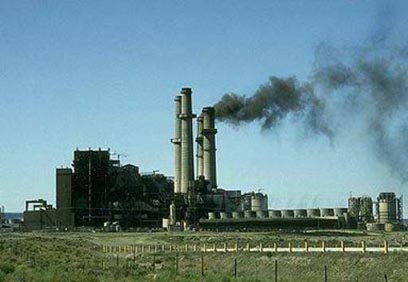
The commission is reviewing PNM’s plan to replace the power with a mix purchased on the wholesale market. PNM has said the replacement power would cost about $6.8 billion for 20 years, most of which would be recovered by boosting customer rates. Environmental groups and members of the Navajo Nation said the decreased emissions are a good first step. But Navajo Nation President Ben Shelly said he is also concerned about the possible negative economic effects of the closure.
PNM says that retiring the two units would cut plant emissions by 50% and help it meet federal emissions mandates. It also says the retirements would save the company $780 million.
More: Durango Herald
NORTH CAROLINA
Regulators Rule Against Utilities, Keep Solar Payment Structure
The Utilities Commission has decided that the pricing structure for power produced by solar facilities is fine the way it is, declining a request from Duke Energy and other utilities to potentially reduce payments to independent power producers.
The utilities had asked the commission to reduce the cutoff point for standard contracts from the current 5 MW to 100 kW. If that change were made, utilities would be able to negotiate separate supply contracts from generators of more than 100 kW. Solar providers sought to boost the limit to 10 MW, saying it would incentivize the renewable industry.
More: News & Observer
DOT Says Fracking Would Cause Millions in Road Damage
The Department of Transportation says increased traffic from natural gas development, which could start as early as this spring in North Carolina, could cause millions of dollars of damage to roads and bridges.
After studying shale gas operations in Pennsylvania, DOT analysts estimated that each fracking operation could require up to 1,600 trucks to deliver sand, water and equipment. The result: an uptick in maintenance and repair costs to roads and bridges that could approach $11 million.
“The volume of traffic can and does cause significant damage to secondary roads over a relatively short period of time,” the report says. “The majority of this traffic occurs over a period of six weeks.” DOT officials have proposed requiring drilling operators to put up multi-million dollar bonds to cover highway repairs.
More: News & Observer
OHIO
State Commerce Director Wants Old PUCO Seat Back

Andre Porter, the current director of the state’s Department of Commerce, has applied to rejoin the Public Utilities Commission, where he previously served for two years.
“I’d like to return to the PUCO because there is complex and important work to be done,” Porter wrote on his application. Porter, a Republican, is seeking the seat currently held by Steve Lesser, the lone Democrat on the five-member commission. Lesser has also applied for re-appointment.
A special panel will select four finalists out of the 16 applicants, and Gov. John Kasich will make the final choice, which must then be approved by the state Senate. Porter served on PUCO from 2011 to 2013, when Kasich appointed him to the Commerce Department position.
More: The Columbus Dispatch
OKLAHOMA
Earthquakes Increase 5-Fold in 2014; Drilling and Injection Could be to Blame
The domestic oil and gas boom is shaking up more than the energy markets. The number of earthquakes quintupled in Oklahoma last year compared to 2013, and geologists say the likely cause is the high volume of wastewater being injected into underground wells approved by the Environmental Protection Agency.
The state experienced 564 earthquakes of magnitude 3.0 or greater in 2014, compared to 100 for the same period last year. Between 1975 and 2008, the state reported between one and three quakes of magnitude 3.0 or greater a year.
Most seismic activity appears to be linked to underground injection control, the practice of pumping wastewater into deep, isolated rock formations. The bonanza in oil and gas production from shale has produced a boom in wastewater from hydraulic fracturing. In many states, injection wells are the preferred disposal method for the liquids. The U.S. Geological Survey said in a report last year that injection wells were a “likely contributing factor” to the tremors.
More: E&E Publishing
OCC Member to Temporarily Serve as Admin. Director
Corporation Commission member Bob Anthony, the nation’s longest-serving utility commissioner, will temporarily fill in as the commission’s director of administration.
Anthony, who was first elected to the commission in 1988 and has served six times as the OCC’s chairman, said the commission will seek a permanent director after its third member, Todd Hiett, takes office this month.
The director’s position became vacant following the departure of Lori Wrotenbery, who announced in October that she would be leaving for family reasons.
More: KGOU
PENNSYLVANIA
Media Asking Supreme Court to Force PUC to Open PPL Outage Records
Two news organizations are asking the state Supreme Court to force the Public Utilities Commission to release documents related to an investigation into alleged favoritism in PPL Utilities’ storm response.
The PUC cited the Allentown utility for accelerating the repair of an unnamed customer during a 2011 storm, and PPL paid a $60,000 settlement. The Morning Call and the Wilkes-Barre Times requested that the PUC identify the customer. The state Office of Open Records agreed with the news organizations. But the PUC and PPL appealed the decision, and the Commonwealth Court ordered that the records stay closed. A coalition of Pennsylvania media organizations wants the Supreme Court to overturn that ruling.
“In this case, the system failed to serve the public’s right to information to which it was fundamentally entitled,” said David M. Erdman, The Morning Call‘s editor and vice president. “Our coalition is strongly affirming the public’s right by speaking with one voice in our petition to the Supreme Court.”
More: The Morning Call
SOUTH DAKOTA
PUC to Allow TransCanada to Argue for Lapsed Permit
TransCanada, builder of the proposed Keystone XL Pipeline, should be allowed to try to convince regulators that a construction permit issued in 2010 is still valid, the Public Utilities Commission ruled last week. State law calls for projects to get recertified if the permits are more than four years old and construction hasn’t begun.
The Yankton Sioux and Rosebud Sioux tribes had sought to dismiss TransCanada’s application, saying that changes to the pipeline plan since the permit was issued should force the company to start the process again. “At best,” said Commission Chairman Gary Hanson, “the tribes’ motion is premature. Under South Dakota law, the applicant has a right to a hearing.”
A hearing is set for May.
More: Aberdeen News
VIRGINIA
Dominion Resources Suing Landowners who Denied Property Access for Surveys
Process servers in Nelson and Augusta counties are expected to be busy this week serving notices to landowners who have denied access to pipeline surveyors working for Dominion Resources.
Dominion and other companies who want to build a natural gas pipeline through Virginia filed 20 suits in Nelson County and 27 in Augusta County, arguing that utilities are allowed to survey private property for prospective projects. The companies are building a 550-mile Atlantic Coast Pipeline to deliver shale gas from West Virginia to North Carolina.
More: C-Ville
WISCONSIN
Public Comment Session for Badger-Coulee Project Ends
State utility regulators have closed the public comment session for the proposed Badger-Coulee transmission line, and technical hearings are to start this week. The Public Service Commission will determine whether the project, part of a larger transmission line known as CapX2020, is in the public interest.
The $580 million line would deliver wind energy from Minnesota and Iowa to markets in the east. Opponents of the line, mostly landowners whose rights of way could be taken through eminent domain, say the demand for the electricity just isn’t there. Builders ATC and Xcel say the line is needed to improve system reliability and to deliver cheaper power to consumers.
More: Lacrosse Tribune
MANITOBA
Pallister Calls for Change to Bipole III Route for Savings
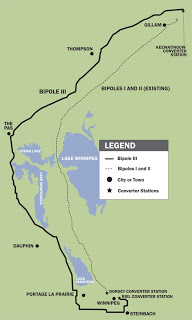
“This is an opportunity to reset the debate on the most important project currently being undertaken by Manitoba Hydro and the province,” he said. “We demand the next potential premier tell Manitobans if they will take steps to keep Manitobans’ Hydro bills low.”
The transmission project, proposed in 2010, would deliver power from northern hydroelectric plants to customers in the south of the province.
More: Winnipeg Free Press
